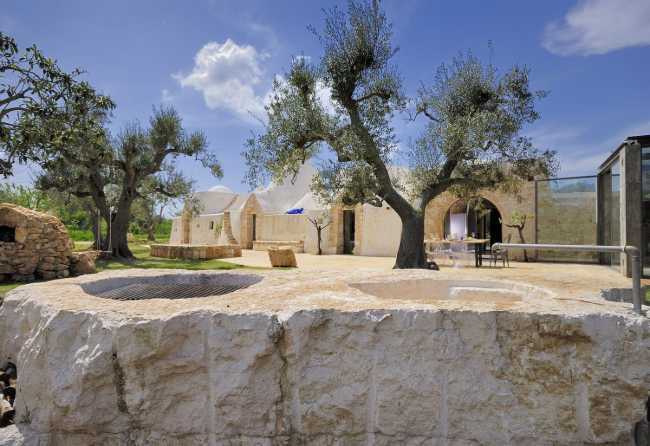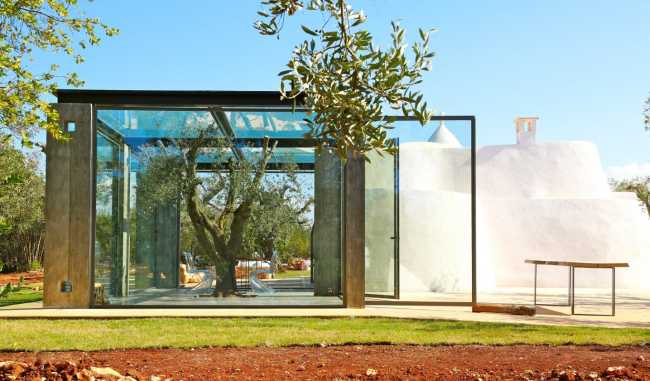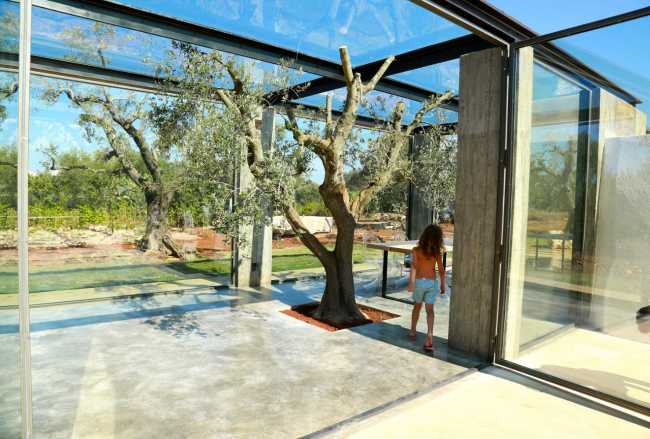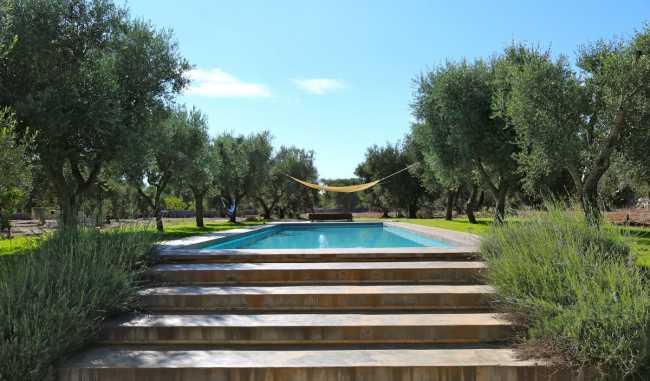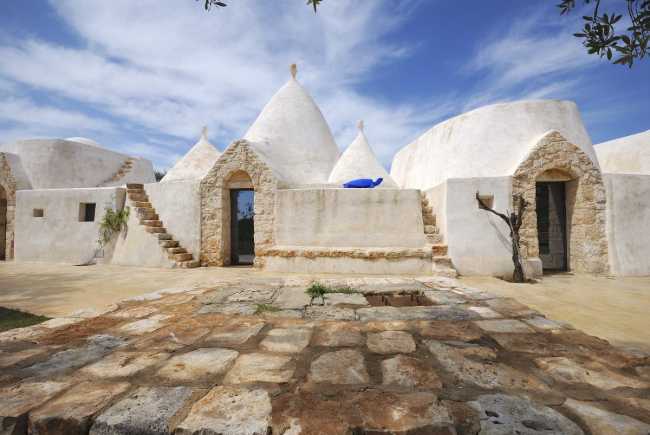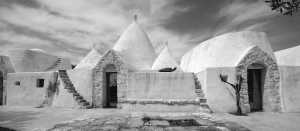In this project, the love for the territory plays a leading role: this is what made the Roman family owner to choose the Ostuni countryside to live there and this is what has permeated the philosophy of the project: we think of the total immersion in the surrounding nature, the inclusion of 13 centuries-old olive trees, the almost exclusive use of typical local materials and the use of local workers.
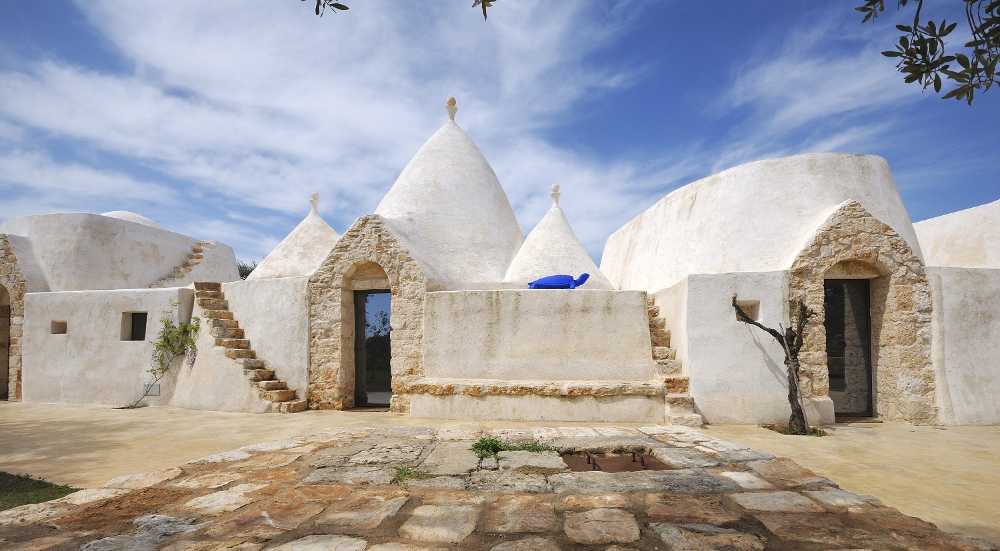

Restoring a trullo in Puglia. The glass cube: essential, linear, natural
A rural paradise is the backdrop to a group of trulli restored to their former glory, thanks to a skilful renovation work in which the interiors seamlessly glide into the exteriors and vice versa.
- #Europe
- #Italy
- #Building recovery
- #Historical Building
- #Housing
- #Glass
- #Concrete
- #Stone
- #Building extension
- #Architectures
- #Renovation
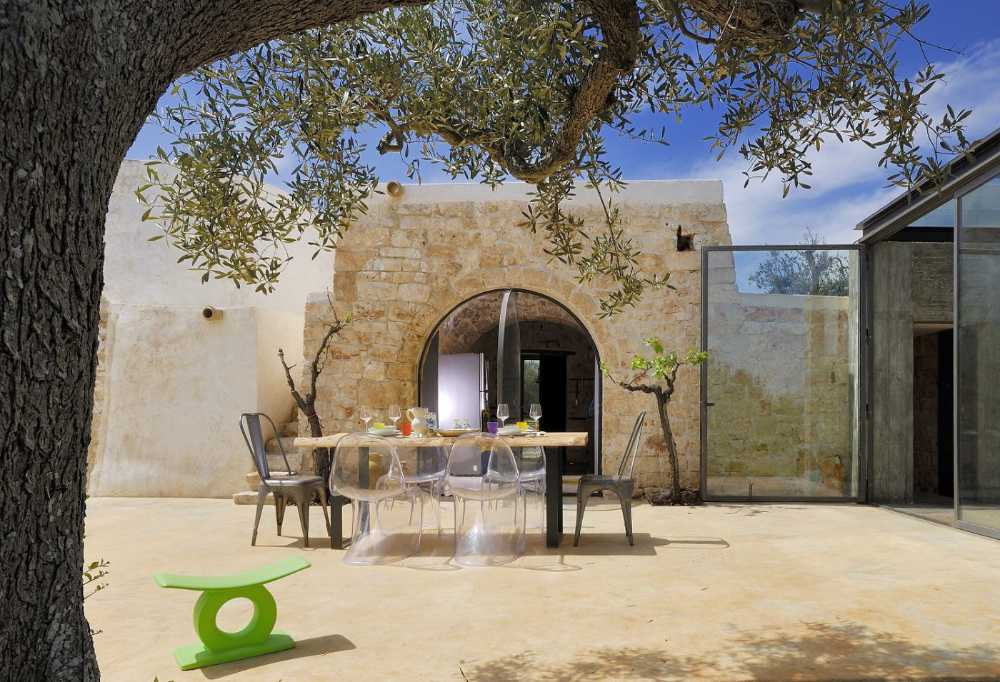
It is not by chance that the Bauhaus principles, an interpretation of design as a union of art, craftsmanship and technology are the inspiration for the recovery and expansion project, where design and implementation are a unique concept: the result of the work is the direct synergy between the various local workers who bring the knowledge of local materials and their processing and the architect/ project manager who guides the intervention and meets the needs of the client. As Enrico Maria Cicchetti (Studio EMC ARCHITECT), the architect who oversaw the project with the collaboration of the engineer Francesco Palmisano, says

The "courageous" part of the intervention was the creation of a new, completely transparent Glass-room volume that made it possible to recover a space formerly used as a storage area for agricultural tools, converting it into a new, extensive living area. The glass cube envelops an immense century-old olive tree, an authentic masterpiece of nature.

The glass cube appears to be essential, linear, natural, composed of a series of reinforced concrete partitions that are rotated with respect to each other and closed by vertical and horizontal glass walls. The surface is a Nuvolato Ideal Work floor that fits discreetly into the architecture. The structure connects with the various environments through walls made of natural stone, which make the spaces and transitions between the different paths, styles and languages that connect the living area to the sleeping area fluid. The appearance of the trulli is absolutely respectful of tradition: the external walls are plastered with milk lime, a natural material typical of the area, excluding architectural details, exclusively processed face to face.

Inside you can experience an archaic and rocky atmosphere: all the vertical surfaces, including the roofs, are face exposed, enhancing both the workmanship and the patina that embodies the local stone. This work was made possible by carefully exporting the pre-existing plaster into lime milk, carefully working the joints and filling the interstices with pesto shard. A material in contrast to the cement that characterizes all horizontal surfaces, floors and tops.

The interior decoration is characterized by the unconventional choice to use artifacts made by local craftsmen, most of which are natural and organic objects made with local materials. And finally, an atmosphere that smells of antiquity, as if time had stopped can also be experienced in the bedrooms and bathrooms created inside the trulli.


